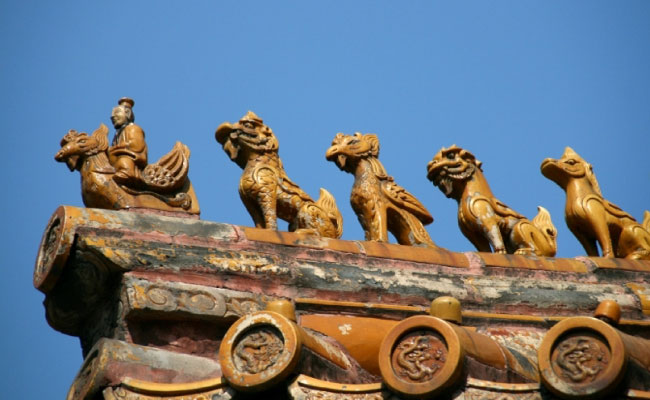This week, China’s factory activity improved a little even as factory employment figures slumped; Adobe announced its intention to shutter its China R&D center while other MNCs remain upbeat; and the Alibaba share price fell after last week’s spectacular IPO.
The Macro
To many people’s surprise, China’s factory activity slightly picked up in September, according to the HSBC/Markit Flash China Purchasing Managers’ Index (PMI) released on Tuesday.
The index rose to 50.5 in September from the final reading of 50.2 in August, beating economists’ 50.0 prediction polled by Reuters. However, the sub-index on employment in the manufacturing sector dropped to 46.9, a new low since February 2009, according to Reuters (50 is the threshold between expansion and contraction). This could be a red flag for Beijing, which indicated before that it could tolerate a somewhat lower growth rate on the premise of healthy employment.
One worrying sector is steel, which faces severe overcapacity during a downturn in the housing sector. China’s appetite for crude steel fell 1.9% year-on-year in August, according to the China Iron and Steel Association, as steel-consuming sectors cut back their demand. Steel consumption dropped by 0.3% in the first eight months of the year.
On the other hand, the price of iron ore, the raw material needed for steelmaking, has declined 40% since the beginning of this year. This week, the price fell under $80 per ton, the first time since September 2009. But instead of cutting back, mining giants like Vale and Rio Tinto are ramping up production as a way to force higher-cost competitors out of business. Those firms, along with their Chinese peers, who are also looking to consolidate the industry, have increased iron ore output this year by 8.5% to a record 986 million tons.
Despite the falling price, mining companies are expanding in China because they believe that to fulfill Beijing massive urbanization goal, the country’s demand for steel hasn’t yet peaked. But in the short term, authorities have only resorted to moderate, targeted measures to stabilize the real estate market and spur growth. Last week, instead of cutting interest rates or reserve ratios for everyone, China’s central bank injected RMB 500 billion only to the country’s five biggest banks.
However, rumors that banks will loosen requirements for loan applicants to qualify as first-time home buyers are making their way to the press (multiple-time home buyers are subject to higher down payment and interest rates, etc.).
Yesterday, two of the biggest state-owned banks, Agricultural Bank of China and Bank of China, encouraged their branches to increase mortgage lending to support home buyers’ needs. Housing sales have dropped 10.9% in the first eight months this year, which has prompted more than 30 cities across China to ease policy restrictions on home purchasing.
Analysts believe that Beijing’s decision to stay away from aggressive easing means that economic reforms, which will lead the country to a different growth path that relies more on domestic consumption rather than government-led investment, are being ushered in. But the progress could be slow, and the sluggish growth of the Chinese economy might entice Beijing to postpone its reform agenda.
According to The Wall Street Journal, top Communist Party leaders are considering replacing the current governor of People’s Bank of China (PBOC) Zhou Xiaochuan, a move some observers believe could impede China’s reforms. In the past year, Zhou has been the poster child of financial reforms: liberalizing interest rates and the RMB capital account. But others argue that Zhou could not have acted against the top leaders’ will to promote those reforms, which means that introducing a new central bank chief isn’t necessarily a bad thing.
China is a mixed bag of MNCs
Chinese regulators’ anti-monopoly campaign has kept many foreign companies on their toes, especially those in the technology and auto industries.
But for General Motors, China is still a very lucrative market. The US automaker’s President Matthew Tsien told the media in Shanghai that the company expects to sell more than three million cars in China in 2014, with a 40% growth in its premium brands like Cadillac. GM also plans to introduce 60 new and upgraded brands into the world’s largest car market through 2018.
Airbus is also looking to Chinese skies for strong future growth. The European planemaker has raised its forecast for jet demands in the next 20 years, during which time China will replace North America as the world’s largest domestic market.
Airbus expects total demand for 31,400 passenger and freighter airplanes between 2014 and 2033, a 7% increase from its earlier prediction. According to private research, the number of airliners in China will rise from 1,969 in 2012 to 6,494 in 2032,
But for software company Adobe, China didn’t quite work out as expected. This week, the California-based company that develops programs such as Photoshop and Flash, has decided to shut down the majority of its China operations.
According to the Chinese media, Adobe’s is going to close its entire R&D center and lay off about 400 employees. The firm will keep a small sales team to continue operating in the country.
Adobe recently posted anemic financial results—sales only grew by 1% in the last quarter, while profits dived 46%. In late 2012, the company shut down its office in Taiwan.
BABA shares fell
After claiming the title of the world’s largest IPO and jumping 38% on the first trading day on the New York Stock Exchange, the Alibaba share price has declined to $88.92, lower than its opening price of $92.70.
The fall came among a slump of US technology stocks in general, and Alibaba bears have already sold short 8.9 million of the firm’s 368.1 million shares (about 2.4% of total shares), according to Bloomberg.
That is a little bit of a comedown from the heady IPO debut last Friday. We’ll wait and see how things pan out for Alibaba in the future.



















